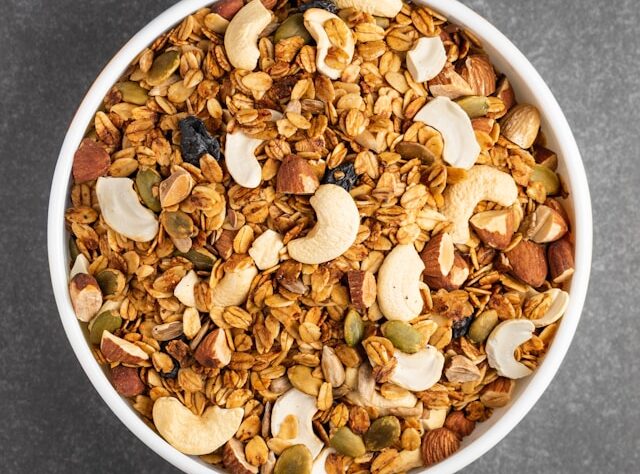How the Body Loses Its Explosiveness with Age
As we age, our movements lose their snap and speed — not just because of training, but because the body’s inner orchestra falls out of rhythm. Here’s how to bring it back in tune.

Sometimes it starts with the smallest moments.The jump onto the bike feels heavier than before. The start of a run is less snappy. Standing up quickly takes a breath more than it used to.
You’re still fit — but that sharp, explosive feeling isn’t quite the same. This isn’t a sign of weakness; it’s a natural process. Over time, the coordination between nerves and muscles changes — our inner orchestra that controls movement begins to fall out of sync.
In younger years, every signal was instant: The “conductor” (our nerves) gave the cue, and the “musicians” (our muscle fibers) played powerfully and precisely. But as we age, the fast musicians — the so-called fast-twitch fibers — lose their sensitivity to the beat. They’re activated less often, become slower, and lose strength.
We don’t just lose strength — we lose the ability to activate it quickly and precisely.
When the Orchestra Falls Out of Tune
Each muscle contains a small orchestra of different musicians. The slow strings — our slow-twitch fibers — play steady and even, keeping the melody of everyday life going. They allow us to walk, stand, and move for hours without tiring.
Then there are the fast musicians — the brass and percussion — responsible for energy, rhythm, and drive. These are our fast-twitch fibers, the ones that power sprints, jumps, and quick reactions. They depend on precise cues from the conductor — clear signals from the nervous system.
And that’s where aging begins to show. The conductor loses precision. Signals become weaker — some arrive late, others not at all. The slow musicians keep playing, but the fast ones stop hearing the cues. They fall silent, and over time, they fade away.
At the same time, the instruments — the delicate connections between nerves and muscles — begin to age. Oxidative stress and small, chronic inflammations disrupt how signals are transmitted. The sound becomes dull; the coordination loses sharpness.
In aging, it’s not the muscles themselves that fail first — it’s the communication between nerves and muscles that becomes blurred. The fast fibers suffer most — they rely on strong, clear impulses to come alive. When that signal crackles, the body misses the beat — and movement loses its rhythm.
Bringing the Orchestra Back in Sync
We’ve often talked about how muscles change with age. But today, let’s look at it differently — visually, simply, and maybe even a little musically. Because once you understand how your body’s orchestra works, you can see where to step in when it starts to lose rhythm.
It’s not just about training harder or adding new exercises. More important is restoring communication — so that all parts listen to one another again. The conductor — your nervous system — must send clear, precise signals. The instruments — the fine nerve-muscle connections — must be in tune. And the musicians — your muscle fibers — need energy and building blocks to keep their tone strong. Only when conductor, instruments, and musicians work in harmony again can the body’s orchestra play with strength, precision, and rhythm.
That’s where NoDoubt SilverGreen comes in. It was designed to bring this orchestra back into sync — with three natural ingredients that act like finely tuned sections working together:
1️⃣ Goji Berry Extract (rich in Quercetin)
2️⃣ Omega-3 Fatty Acids
3️⃣ Leucine
1. Goji Berry Extract – the Instrument Maker Who Restores the Sound
An orchestra can only sound as good as its instruments are maintained. If they’re worn or out of tune, even the most beautiful melody turns dull.
It’s the same in our body. Over time, the fine connections between nerves and muscles — our “instruments of movement” — come under strain. Oxidative stress and silent inflammation disrupt the transmission of signals, especially to the fast-twitch fibers responsible for power and reaction.
This is where Goji Berry Extract, rich in Quercetin, helps. Think of it as an expert instrument maker who restores and fine-tunes the delicate connections. It protects nerve endings from oxidative damage, calms inflammatory noise, and restores clear communication — so every musician hears the conductor’s cue again.
2. Omega-3 Fatty Acids – the Sound Engineer Who Calms the Room
Even a perfectly tuned orchestra won’t sound good if the room echoes or background noise drowns everything out. For harmony, you need clean acoustics — a calm, balanced space.
The same is true for the body. Its “acoustics” are shaped by the inflammatory environment — those subtle, often invisible irritations in the tissues that increase with age and disturb coordination.
Omega-3 fatty acids act like a sound engineer who restores calm and balance: they reduce low-grade inflammation, support tissue recovery, and stabilize cell membranes so that nerve signals can flow smoothly again.
3. Leucine – the Conductor’s Spark
Even when the instruments are tuned and the room is calm, the orchestra only comes alive
when the conductor raises the baton with energy and precision.
That’s where Leucine comes in — an essential amino acid that triggers the body’s central muscle-building process, the mTOR switch. It signals muscle fibers to rebuild and energizes the fast ones in particular. This gives the conductor — your nervous system — new strength to send clear commands, while the fast musicians regain their drive.
The result: the entire orchestra finds its rhythm again — strong, quick, and full of life.
When Movement Becomes Music Again
As the years go by, some musicians in our body’s orchestra grow quieter; some stop playing altogether. But those who listen closely and act early can bring them back before they fall silent.
Fast muscles aren’t gone forever — they just need clear signals, energy, and care to stay in time.
NoDoubt SilverGreen supports this harmony — helping the conductor give his cues again, the instruments resonate clearly, and the orchestra stay alive.
Because aging doesn’t mean turning down the volume — it means learning to play in rhythm again.
Protein for Active People over 40:
NoDoubt SilverGreen
From the age of 30, our body undergoes natural changes that affect our fitness and health. Muscle mass decreases, especially in the 40s, and muscle regeneration slows down considerably. This leads to a decline in your strength and performance.
Discover solutions that enable you to counteract muscle loss at an early stage and maximize your performance from the age of 40.
Proteins for Women Under 40:
NoDoubt AmberBlaze
Women have long been neglected in sports science. The female cycle was seen as a disruptive factor, which meant that recommendations were often based on male needs and ignored the specific requirements of women.
Discover solutions that tackle nutrient deficiencies from the ground up and maximize female performance.



